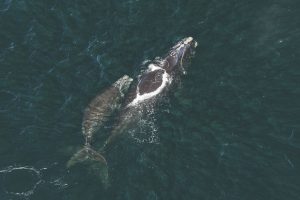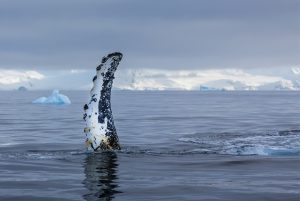
Wildlife
Punctuation’s mark: Can we save the critically endangered North Atlantic right whale?
After a series of mass deaths in recent years, what can we do?
- 4110 words
- 17 minutes
This article is over 5 years old and may contain outdated information.
Science & Tech

The deaths of eight endangered North Atlantic right whales in the Gulf of St. Lawrence this summer have experts scrambling to figure out why so many of the whales have congregated in the Gulf this year, what’s killing them and what to do next.
Preliminary results of necropsies on six of the eight carcasses seem to suggest blunt force trauma consistent with ship strikes and fishing gear entanglement played a role in the deaths. As the gateway to the Great Lakes, the Gulf is one of North America’s busiest shipping lanes and a major fishing hub. At least one whale advocate has called for a complete review of fishing and shipping activity in the areas where the whales are known to congregate.
That can be difficult to pinpoint given the vastness of the open ocean and annual fluctuations in the whales’ preferred food, but an ongoing research project has come up with a low-cost and minimally invasive way to track whale movements: listening for their songs.
For the past two summers, researchers at Dalhousie University in Halifax have deployed battery-powered underwater drones called Slocum Gliders to patrol little-studied areas for whale activity. The data they collect is used to track where different types of whales are gathering, which helps inform ocean management practices.
“These animals are highly migratory, so the only way we can manage their conservation is to manage their habitats,” explains Kimberley Davies, a post-doctoral research fellow at Dalhousie.
The Dalhousie team supplies data to the Canadian Navy, which now ceases its training exercises on the continental shelf when whales are detected. The team is hoping to eventually be able to broadcast whale advisories to commercial ships too.
“We want to help mitigate harm to the animals as much as we can,” Davies says.
The illustration below explains how the gliders work:

Are you passionate about Canadian geography?
You can support Canadian Geographic in 3 ways:

Wildlife
After a series of mass deaths in recent years, what can we do?

Environment
Ten years after the release of her seminal book Sea Sick, Alanna Mitchell again plumbs the depths of the latest research on the health of the world’s oceans — and comes up gasping

Wildlife
When one of the few remaining females of reproductive age in the southern resident population of North Pacific killer whales was found dead near Comox B.C. in 2014, an investigation was launched. The results highlight the challenges of protecting our most iconic marine mammals.

Science & Tech
Satellite detection of whales is improving rapidly, but finding the behemoth creatures is still surprisingly tricky